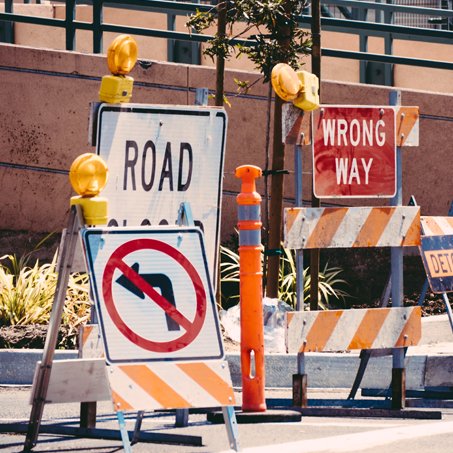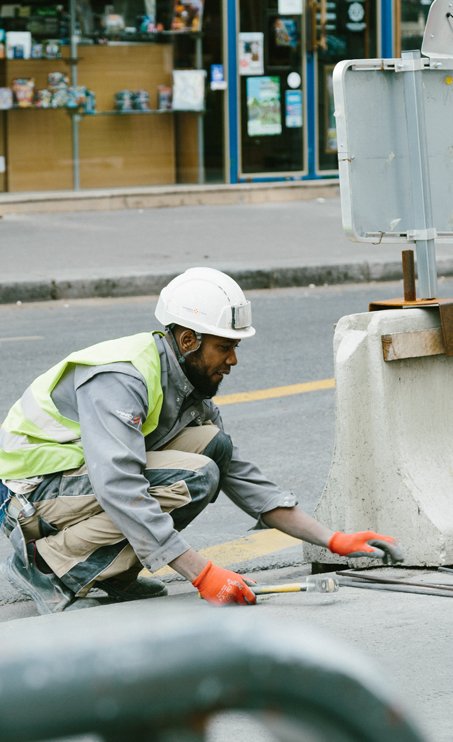What is The Importance of Road Hump in Traffic Flow?
Road humps are an effective traffic calming measure that is designed to slow down the vehicular speed and improve safety for pedestrians and other road users. Here are some of the important benefits of road humps in traffic flow:
- Reducing Speed: Road humps force drivers to slow down to pass over them, reducing their speed and making the road safer for all road users, especially pedestrians, and cyclists. This is particularly important in areas with high foot traffic or where there is a high risk of accidents.
- Enhancing Safety: Road humps help to reduce the risk of accidents by providing a visual and physical warning to drivers that they need to slow down. This can be particularly important in residential areas, school zones, and other areas where there are vulnerable road users.
- Encouraging Safe Driving: Road humps can help to encourage safer driving behavior by reminding drivers to pay attention to their surroundings and drive at a safe speed.
- Reducing Noise Pollution: Road humps can also help to reduce noise pollution from vehicles, which can be particularly important in residential areas where noise can be a major nuisance for residents.
What are Road Humps or Speed Breakers?
Road humps, also known as speed breakers or speed bumps, are raised sections of pavement that are designed to slow down vehicular traffic. They are typically made of asphalt or concrete and are constructed across the road surface perpendicular to the direction of traffic flow. Road humps are usually installed on roads where speeding is a problem or where there is a need to slow down traffic to improve safety for pedestrians, cyclists, and other vulnerable road users.
Road humps are designed to ensure drivers reduce their speed when passing over them, as driving over a road hump can be uncomfortable and even damaging to a vehicle if taken at high speed. The height, width, and spacing of road humps can vary depending on their intended use and the speed limit of the road. They can range from small, gentle humps that allow for a relatively smooth passage, to larger humps that require drivers to slow down significantly.
While road humps can be an effective way to slow down traffic, they can also negatively affect traffic flow if not installed properly. They can cause delays, congestion, and increased fuel consumption if drivers need to slow down and speed up frequently, particularly on roads with heavy traffic. Therefore, careful planning and design are necessary to ensure that road humps are installed in a way that balances their safety benefits with their impact on traffic flow.
How to install 50mm Plastic Road Hump by Ladwa Solutions Inc.
How do Road Humps Affect Traffic Flow?
Road humps can have both positive and negative effects on traffic flow, depending on the context in which they are installed. Here are some ways that road humps can affect traffic flow:
- Slowing Down Traffic: The primary purpose of road humps is to slow down traffic, which can be beneficial in areas where speeding is a problem or where there are high volumes of vulnerable road users. However, this can also result in slower traffic flow, longer travel times, and increased congestion.
- Reducing Accidents: Road humps can reduce the number and severity of accidents on roads by forcing drivers to slow down and pay more attention to their surroundings. However, this can also result in delays and longer travel times for motorists.
- Encouraging Alternative Modes of Transportation: In areas where road humps are installed to improve safety for pedestrians and cyclists, they can encourage more people to walk, cycle, or use public transportation. However, this can also lead to more congestion on the roads and longer travel times for motorists.
- Disrupting Traffic Patterns: Road humps can disrupt traffic patterns and cause drivers to slow down and speed up frequently, which can increase fuel consumption and emissions. This can be particularly problematic on roads with heavy traffic, where delays and congestion can have a significant impact on overall traffic flow.
Effect of Road Hump on Driving Habits
Road hump or speed breakers can have a significant impact on driving habits, particularly in areas where speeding is a problem or where there are high volumes of vulnerable road users. Here are some ways that road humps can affect driving habits:
- Slowing Down: One of the main effects of road humps is slowing down drivers. When drivers approach a road Hump, they are forced to reduce their speed to avoid damaging their vehicle or experiencing discomfort. This can result in more cautious and considerate driving, particularly in areas where speeding is a problem.
- Increased Awareness: Road Humps can also increase driver awareness and encourage drivers to pay more attention to their surroundings. Drivers need to be aware of the road conditions ahead of them and adjust their driving behavior accordingly, which can make them more alert and focused on their driving.
- Improved Safety: By encouraging drivers to slow down and pay more attention to their surroundings, road humps can improve safety for all road users. This is particularly important in areas with high volumes of pedestrians or cyclists, where accidents can be particularly severe.
- Reduced Speeding: Road humps can discourage drivers from speeding, particularly in areas where they are installed on a regular basis. When drivers become accustomed to road humps, they may be less likely to speed in these areas, even when there are no humps present.
Conclusion
In summary, humps on road can have a significant impact on driving habits, encouraging more cautious and considerate driving and improving safety for all road users. However, it is important to balance the benefits of road humps with their potential impact on traffic flow and to carefully consider their placement and design to ensure that they are effective and do not cause unnecessary disruption or delays for motorists.








